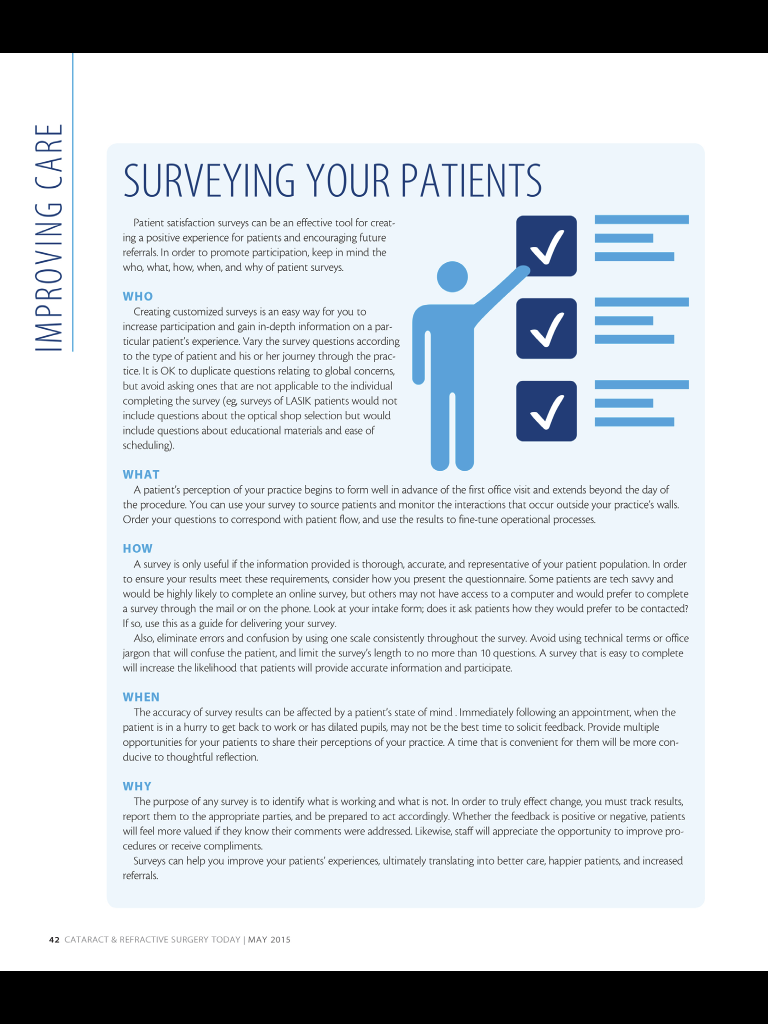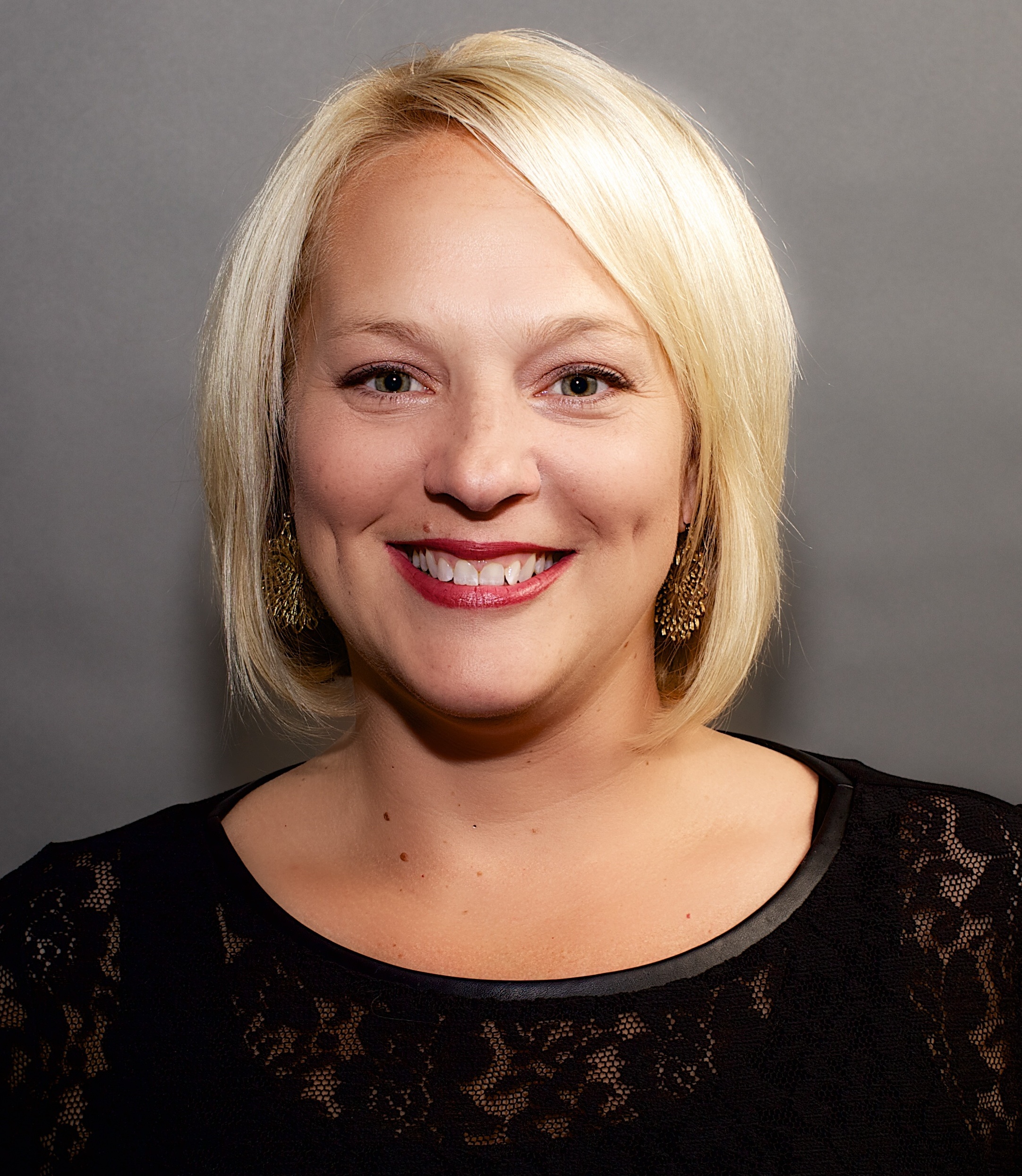 Patient satisfaction surveys can be an effective tool for practices to create a positive patient experience and encourage future referrals. In order to promote participation, keep in mind the who, what, how, when and why of patient surveys.
Patient satisfaction surveys can be an effective tool for practices to create a positive patient experience and encourage future referrals. In order to promote participation, keep in mind the who, what, how, when and why of patient surveys.
WHO: Creating customized surveys is an easy way for you to increase participation and gain in-depth information on a particular patient experience. Vary the survey questionnaire according to the patient type and their journey through the practice. It’s OK to duplicate questions relating to global concerns, but avoid asking those that are not applicable to the individual completing the survey, (e.g. LASIK patient surveys would not include questions about the optical shop selection, but would include questions about patient education materials and ease of scheduling).
WHAT: A patient’s perception of your practice begins to form well in advance of their first office visit and extends beyond the procedure day. You can use your survey to source patients and monitor the interactions that occur outside your practice walls. Order your questions to correspond with patient flow and use the results to fine-tune operational processes.
HOW: A survey is only useful if the information provided is thorough, accurate and representative of your patient population. In order to ensure your results meet these requirements, it is important to consider how you present the questionnaire. Some patients are tech savvy and would be highly likely to complete an online survey, but others may not have access to a computer and would prefer to complete a survey through the mail or on the phone. Take a look at your intake form; does it ask the patient how they would prefer to be contacted? If so, use this as a guide for delivering your survey.
Also, eliminate errors and confusion by using one scale consistently throughout the survey. Avoid using technical terms or office jargon that will confuse the patient and limit the length to no more than ten questions. Having an easy to complete survey will increase the likelihood that patients will provide accurate information and participate.
WHEN: The accuracy of survey results can be affected by the state of mind your patient is in when completing the questionnaire. Immediately following an appointment, when the patient is in a hurry to get back to work, or has dilated eyes may not be the best time to solicit feedback. Provide multiple opportunities for your patients to share their perception of your practice at a time that is convenient for them and conducive to thoughtful reflection.
WHY: The purpose of any survey is to identify what is working and what is not. In order to truly affect change you must track results, report them to the appropriate parties and be prepared to act according to your results. Whether the feedback is positive or negative, patients will feel more valued if they know their comments were addressed. Likewise, staff will appreciate the opportunity to improve procedures or receive compliments.
By providing various opportunities and means to provide feedback, patient satisfaction surveys can help you improve your patient experience, ultimately translating into better care, happier patients and increased referrals.
This article from Nicole Monacell, Director of Marketing and Inside Sales at Sightpath, was featured in the May edition of CRST.

All Sightpath Medical customers receive access to a a full range of practice-building resources. From staff training and sample forms, to video tutorials and monthly webinars, we are here to help. Customers can access the Resource Library, here. Additionally, Sightpath Marketing Services can help create interactions and energize a referral network to drive procedures, with ongoing practice development support on a variety of levels. To learn more about Sightpath Marketing Services, click here.